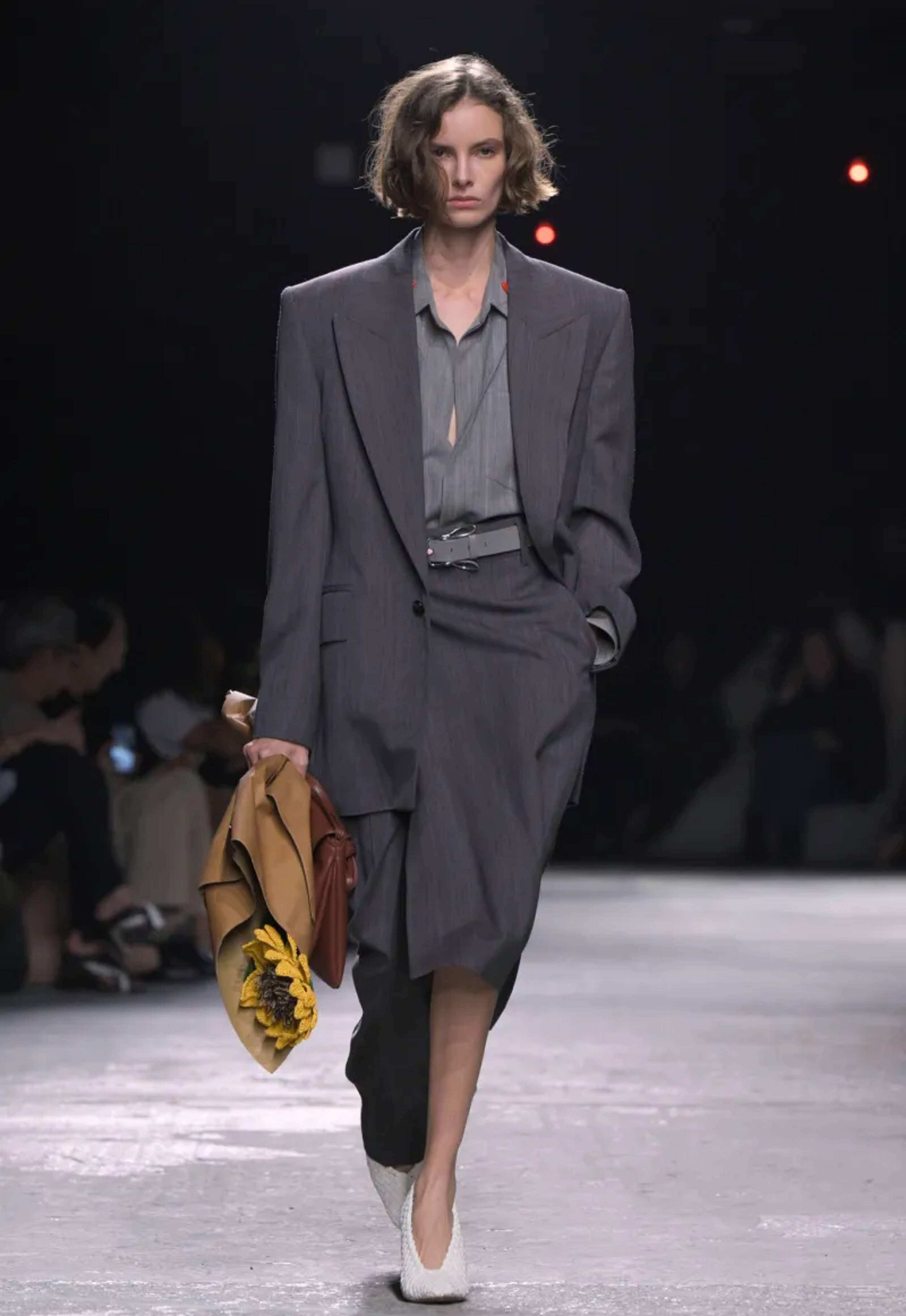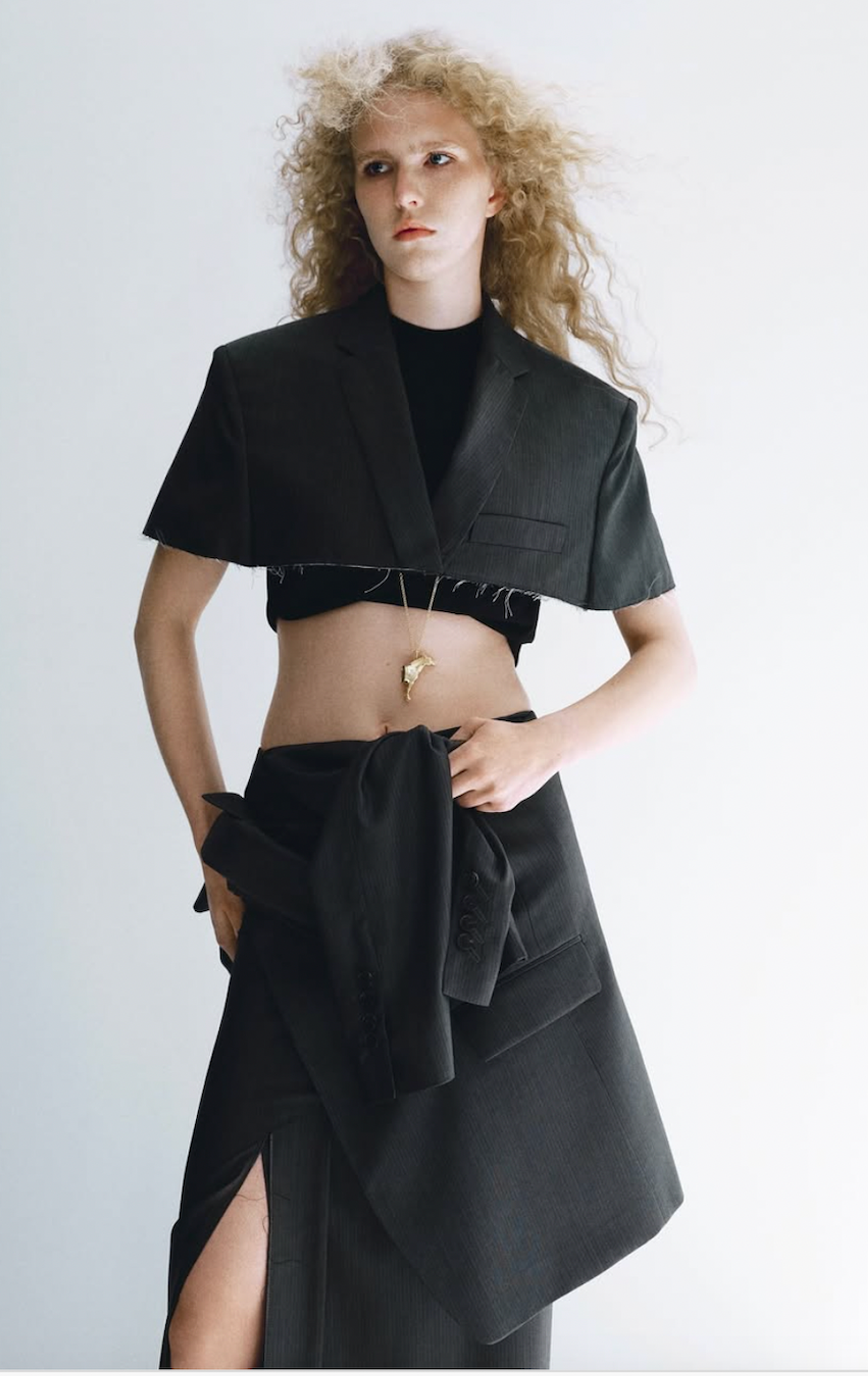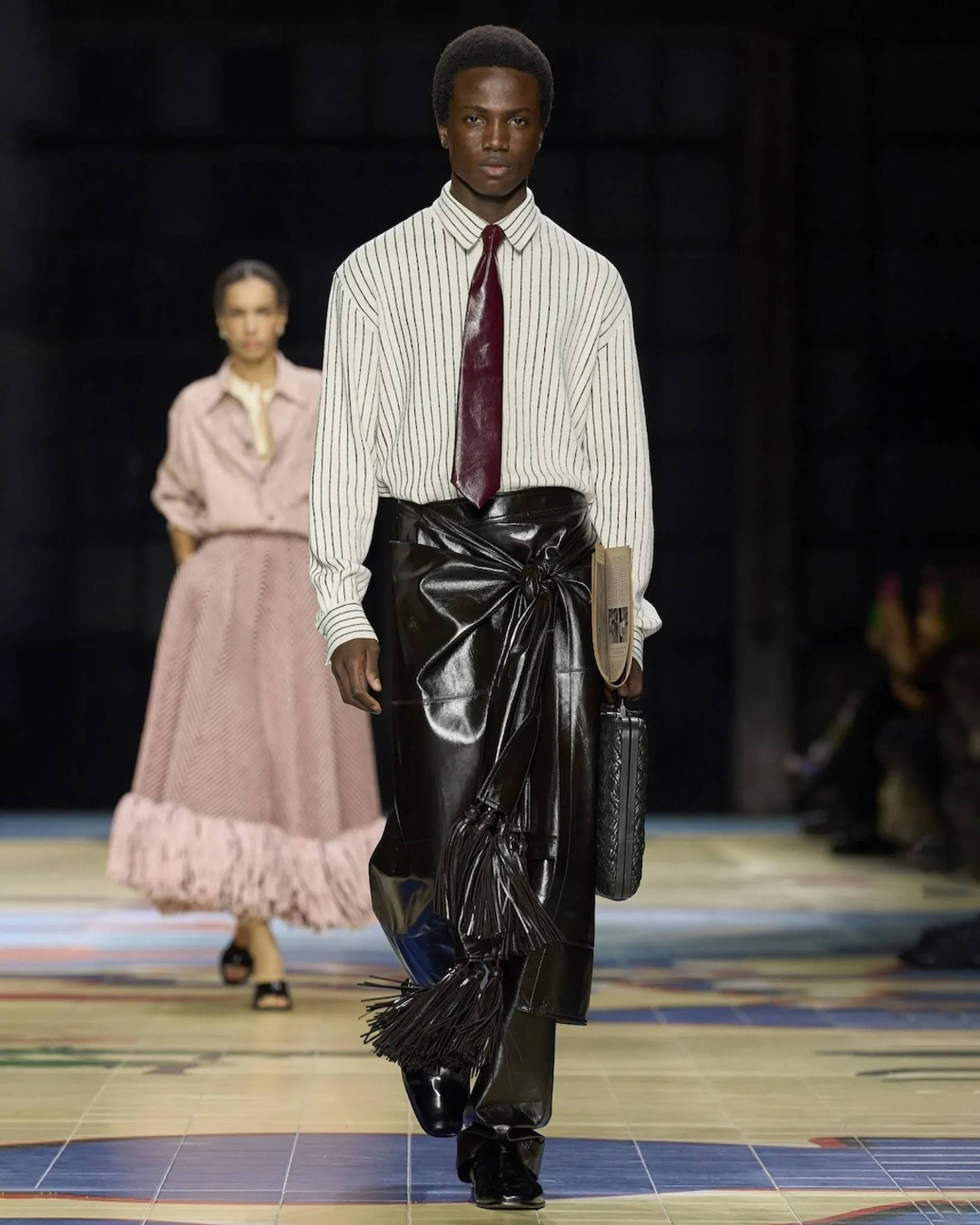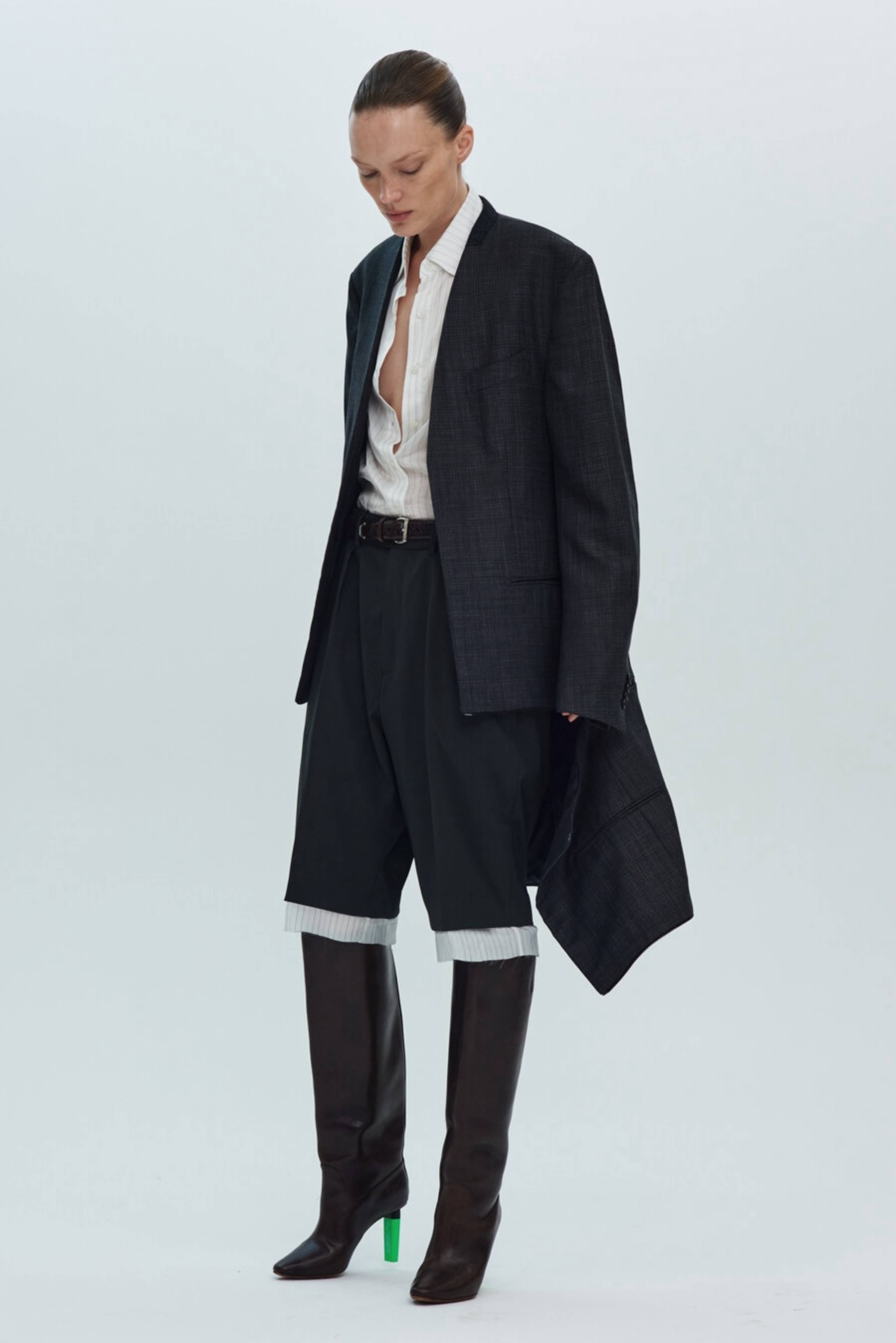I’ve been seeing a lot of clothes on the catwalk this year that I can’t quite get my head around; garments that are half one thing and half something else. Matthieu Blazy’s single-legged pant-skirt at Bottega Veneta for Spring/Summer 25 squared the circle of the renaissance of the skirt-over-pants look, while Litkovska for Spring/Summer 24 incorporated a jacket over trousers. Seemingly casually tied around the waist, it was, in fact, another skirt.
There’s something about the combined nature of these pieces that suggests utility wear, the kind of clothes that do all the jobs at once, but they don’t quite fit the genre’s definition, which tends to split two conceptual ways. There’s utility wear that contracts and utility wear that converts. We’re all familiar with what are literally called “all-in-ones,” from jumpsuits to dungarees to arse-hungry “bodies” with clit-grabbing crotch poppers. And we all know that these contracted garments are often less “utile” than they look, as anyone who’s wriggled out of a onesie in a wet-floored club toilet cubicle will tell you. They make the Balenciaga “pantaboots” worn by Isabelle Huppert at the designer’s Fall/Winter 22 show look, if anything, a little more practical.
The second strand of utility wear is convertible. It might have started with Rohan’s gorpcore hiking pants that zip off into shorts, but its luxe apotheosis is ex Vogue Ukraine fashion director, Julie Pelipas’s Bettter upcycled tailoring label. The current collection features a “transformer” coat (sold out at €3000) which converts from a blazer to a midi to a maxi.
But, while Blazy’s and Litkovska’s trouser-skirts imply they do two things at once, they only look like they do. The vertically-sliced pant-skirt is not utility wear. The one-legged trouser-skirt is something that works but not quite. It’s the opposite of the jumpsuit’s declaration of utility. Let’s call it a “futility” garment.
Litkovska’s jacket-skirt, SS24
Bottega’s men’s skirt, SS24
Bettter’s transformer coat, FW24
Both offerings are part of a seam of recent fashion topsy-turviness, from Carven’s back-to-front collars to Tibi’s upside-down sweaters. This is not the same vibe as the fashion columns in the earliest magazines I read in the 1980s that advised innovating your look by wearing your cardigan backwards or your jacket upside down. They’re made like that and wouldn’t look right the “right” way round. Is this boredom with fashion? Or nostalgia for thrifty multipurpose dressing? Or is it some kind of rebellion? And if so, against what?
Futility wear plays with looking “wrong” but really only point to the idea of futility. Unless you’re wearing them for hiking, a trouser-skirt is just as functional as an actual skirt or pair of trousers. The futility they point up is social.
Is it something to do with gender? Litkovska’s show blurb claims to consist of “deconstructed menswear staples put on women’s shoulders.” Who wears the trousers is no longer a gender-bending question, though who wears the skirt still is, and the Spring/Summer 25 shows kept the tension of accepted gender codes in play: Litkovska showed a “man skirt” made from a pair of jeans, while Bottega’s men’s skirt came in macho black leather.
There’s something more to this, though. Futility wear not only plays with the futility of gender essentialism, but with the futility of utility itself. The opposite of garments that do two things at once, these clothes do more than you expect, but they don’t do any of it as expected. Plus, they often – and deliberately – look like they do it “wrong.” To paraphrase Jack Halberstsam’s 2011 classic of queer theory, we could call this the Queer Fashion of Failure.
Futility wear is perhaps the sartorial critique of the kind of Swiss army knife functionality expected of a surveilled, zero-hours workforce who, unable to separate their personal from their office life, end up half-dressed.
Yet futility fashion is not ostensibly rebellious clothing. It’s not McQueen or Westwood or Galliano. There are no S&M or punk references, which have, in any case, long been recuperated into the catwalk mainstream. Both Bottega and Litkovska’s pant-skirts come in relaxed shapes and calm colors. You could wear them in the office. Perhaps they’re the sartorial critique of the kind of Swiss army knife functionality expected of a surveilled, zero-hours workforce who, unable to separate their personal from their office life, end up half-dressed. This is the opposite of Charlie Chaplin’s dilemma in Modern Times, whose work asked him to become a cog in a machine. Futility wear’s sartorial expression of half-dressed confusion (literally) suits. (You’ll note that Chaplin is, by contrast, wearing utility overalls.)
Resistance is useless? Halberstam’s serious critical work, undoing heteronormativity via the “utility of getting lost,” is done using examples from trivialized “fun” genres such as Pixar movies and animated TV shows (he ends up in a conceptional punch up with Slavoj Žižek over Kung-Fu Panda). What we could call futility wear’s “quiet quitt-icism” works just as queerly via the equally trivialized art form of fashion.
Clothes that reject utility bring up ideas of its opposite: luxury. If luxury is what is produced in excess of an object’s capacity to be used, then anything can be luxury – if you just make it useless. If there is any radical gesture in futility wear, it’s one of radical decadence that offers a challenge to our always-optimized lives. In trying to do too many things at once, futility wear ends up doing less than the full complement of what it promises. And in doing so, it promises to undo utility itself.





